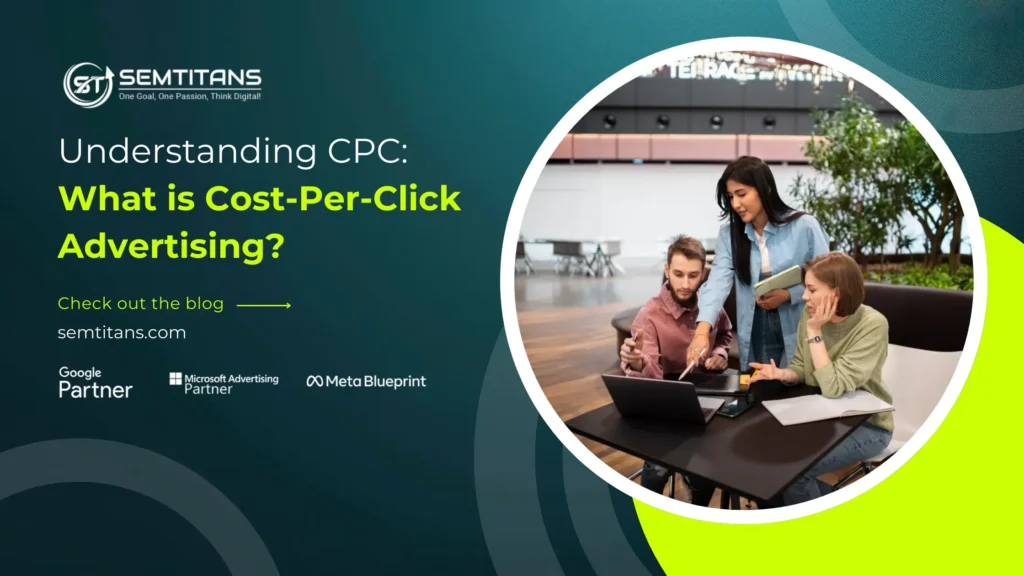
You must have heard about CPC (Cost Per Click) and how it works in various display platforms like Google Ads, Facebook, TikTok and Instagram. According to SEM consultants, the budget plays an important role which helps them in defining CPC. But for those unfamiliar with CPC, let’s check out what it is and how to calculate and the various types of Cost Per Click ads.
Table of Contents
ToggleWhat is CPC?
CPC is a concept that measures how much an advertiser pays each time when his ad is clicked. The platforms in PPC (Pay-per-click), such as Google ads, Facebook, TikTok and Instagram, charge an advertiser each time someone clicks the ad. You tell the platform your budget for each ad clicks. The platform uses its algorithm to calculate and decide where your ad should be on the search result page.
If your CPC is high, each click on your ad costs more. Your ad could appear higher and be seen more, but your funds will drain faster. On the other hand, when your CPC is low, each click on your ad costs less. So, your ad might show less prominently, but your budget gets you more clicks. Proper balance is essential with CPC and to get your ad in front of the right people, but at the same time, you need to manage your spending.
How to Calculate CPC:
As we navigate the concept of CPC let’s check how to calculate it and formula is very simple:
Cost Per Click = Total Amount Spent / Total Number of Clicks
If an advertiser spends $200 on the campaign and gets 700 clicks, then the CPC would be 28 cents.
$200/700 = 28 cents
Types of CPC Ads:
There are five main types of CPC ads which have unique features. Let’s explore it:
Search Ads:
These are simple text ads placed on the search engine results pages (SERPs) where users look for a particular keyword or a group of keywords. They are usually positioned at the top or bottom end of the search results. In this, advertiser bid on the keywords that are related in some way to their products or services, and the ads are shown depending on their relevance and their bid price. Such ads usually have high-intent traffic since the users are already searching for information or products related to the particular ad.
Display Ads:
This is the type of advertising that involves the use of images, banners and sometimes video. These advertisements are often placed on Google Ads and its supporting advertising networks. In this case, the advertisers will usually target the audience by interests, demographics and even by the browsing behavior of the audience, like contextual targeting. This also works well for establishing recognition and outreach to a broader audience, as it is visually attractive.
Social Media Ads:
This deals with advertising on social networking sites such as Facebook, Instagram, Twitter, LinkedIn, etc., which comes in various formats such as images, videos, carousels, etc. Depending on the type, such ads are generally integrated within a user’s feed, within a stories section or even on the sides of the platform. This has a pervasive set of targeting options focusing on user interest, demographics, behaviors and custom audiences. These types of advertisements are very engaging and encourage lots of interaction. Therefore, they are suitable for creating a community and for brand loyalty. To learn more about how these formats fit into your strategy, explore types of social media content.
Shopping Ads:
This showcases images of the product, along with its price and descriptions, straight away on the SERPs, usually above the organic search results. It is mainly observed in search engines like Google under the shopping tab or the results page. These ads are shown in response to particular product searches and based on product feeds on e-commerce websites. This type of advertising is more beneficial to e-commerce businesses as it shows products directly and eases the way of clicking to purchase them.
Retargeting Ads:
This is shown to a person who goes to the site but does not perform any action or make any purchases. It is often seen on social media sites, search engines, or display networks and uses cookies to monitor user’s activities and display relevant ads. This is very conversion-friendly as it presents offers to users who have already interacted with the brand and/or product.
Video Ads:
This is an engaging format which combine images and sound to captivate the attention. They come in various forms such as in-stream ads (shown before, during, or after content), bumper ads (brief and non-skippable), overlay ads (displayed on-screen), and interactive ads that invite viewers to get involved in the ad itself. These are especially popular on platforms such as YouTube and Facebook, which promote engagement and brand awareness. To make the most of video ads, it’s important to keep them short and optimized for mobile viewing.
Wrapping Up
CPC (Cost Per Click) is an important metric that shows how much you pay whenever someone clicks on your ad. It’s calculated by dividing the total ad spend by the number of clicks received. In this blog, we have looked at different types of CPC ads, like search and display ads, to see how they can affect your advertising strategy.












